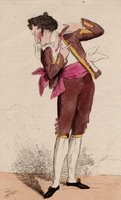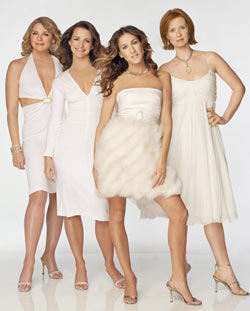Last week, I started a new job. I think it will be all right, but right now I’m completely stressed out, trying to learn new computer databases, new procedures, and still find time to write at home! By coincidence, I’ve also been reading a book titled “Ladies-in-Waiting: From the Tudors to the Present Day” by Anne Somerset, detailing one of the few careers open to women (upper-class women, anyway) during the Regency–royal service.
Chapter Eight concerns the “Later Hanoverian Court”. In the summer of 1761, it was announced that the new king, George III, would marry his cousin Princess Charlotte of Mecklenburg-Strelitz. The king’s mentor, Lord Bute, was immediately bombarded with requests for places in her household for wives and daughters. On July 23, Horace Walpole wrote to Sir Horace Mann, “The new Queen’s family consists of…the Duchess of Ancaster, Mistress of the Robes and first lady of the Bedchamber; the others are the Duchess of Hamilton, Lady Effingham, Lady Northumberland, Lady Weymouth, and Lady Bolingbroke” (he missed one addition, Lady Egremont). The Countess of Dalkeith had angrily turned down a position when she heard she would have to work with the Duchess of Hamilton, who had been one of the famous Gunning sisters. The Duchess of Bedford was also insulted–she was left off the list altogether. The husbands of both these ladies soon went into Opposition. Coincidence? I think not. 🙂
Princess Charlotte herself had hoped to bring with her a large retinue from her own country, as royal brides had in the past (Catherine of Aragon, for example, brought many Spanish retainers with her when she married Prince Arthur Tudor). But the king decreed “the utmost she can bring is one or two femmes de chambre whom I own I hope will be quiet people, for by my own experience I have seen these women meddle more than they ought to do.” So, Charlotte brought two German ladies, Johanna Haggerdorn and Juliana Schwellenborg, who served as joint Keepers of the Robes. Haggerdorn proved to be ” a placid amiable ladylike woman”, but Schwellenborg was a different kettle of fish. In 1765, the king, irritated by her intrusiveness and arrogance, was only dissuaded from sending her home by the persistent entreaties of his wife! Among the other ladies she was seen as a petty tyrant. Novelist Fanny Burney, Haggerdorn’s successor, wrote that S. was “noxious and persecuting.” The Queen, however, adored her, calling her a “faithful and truly devoted…servant.”
Perhaps one reason for the queen’s dependence on S. was the fact that she was never really at ease with her sophisticated English ladies (and not encouraged to develop close friendships by her possessive husband!). The Duchess of Ancaster stayed at her post until her death, but in 1784 the queen fell out with the Duchess of Arrgyll (formerly Hamilton), who was flirtatious and unpunctual, as well as the mother of a scandalous daughter. The Countess of Northumberland (a “vulgar woman” who liked “show and crowds and junketing”) left way back in 1770. And Lady Bolingbroke had to leave when she and her husband divorced. I can’t imagine these ladies partiuclarly mourned leaving court (except for the chances for family advancement and prestige), as the king and queen were known to be deadly dull (until the king went crazy, that is!).
There are so many interesting things to say on this topic, I may have to continue next week! In the meantime, how do you think YOU would have fared as lady-in-waiting?






